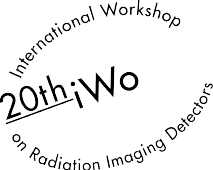Speaker
Description
Timepix3 readout chip – the latest member of Medipix family of a hybrid detectors – brought several great functionalities in comparison with older Timepix, i.e. a high hit-rate, a time resolution of 1.56ns, event data-driven readout mode, and mainly the capability to measure the Time-over-Threshold (ToT) and the Time-of-Arrival (ToA) values at the same time.
However, there are postulates that Timepix3 is not suitable in low power applications and in applications where heating and cooling are crucial. As it has been hinted in [1], these expectations may not be valid. Authors of this contribution deal with the dependency of various settings of an analogue and a digital part of the detector on a power consumption. For this measurement, Timepix3 chipboard and firmware in Katherine readout were modified so that user can measure power consumption of an analogue and a digital part “on-line” and directly in a control software.
In the contribution it is shown that a standard power consumption is approximately 1.5W. However, just by a simple change of several internal DACs, the consumption can be reduced by a half. Other reductions can be achieved by the change of clock management of a digital part of the Timepix3. Mainly a decrease of frequency of a matrix clock can yield significant reduction of power consumption. This fact is important not only from viewpoint of a power consumption, but it means also benefit, for example, for measurement in a vacuum chamber, where heating of the detector is relevant issue. The reduction of the power consumption and heating of detector could open possibilities of usage of Timepix3 in space applications.
References
[1] Llopart, X.: Timepix3 in low power mode. Contribution in Medipix meeting 3/2018. CERN




